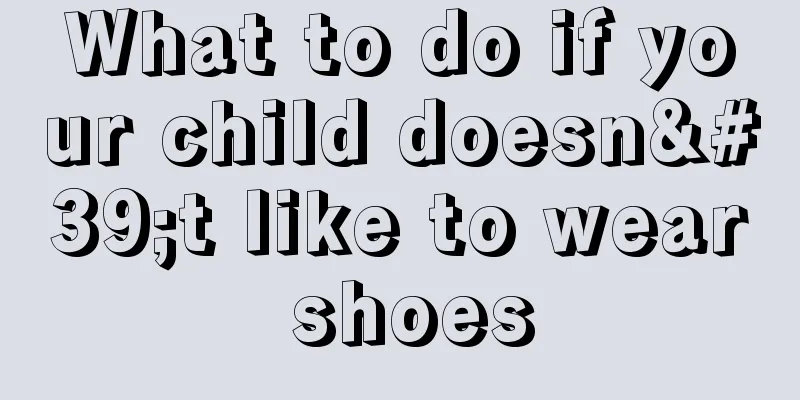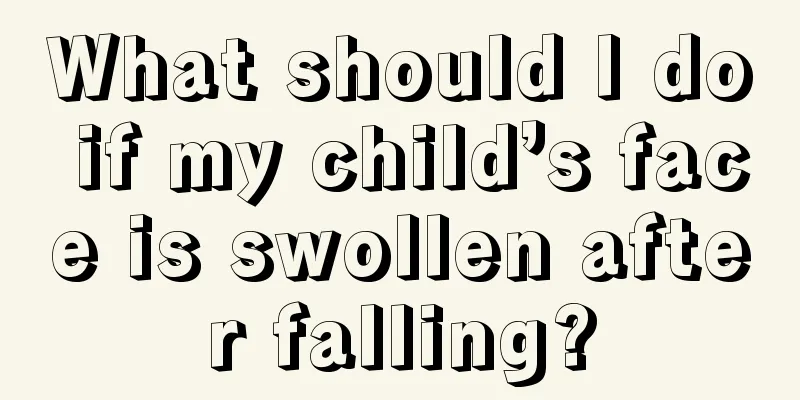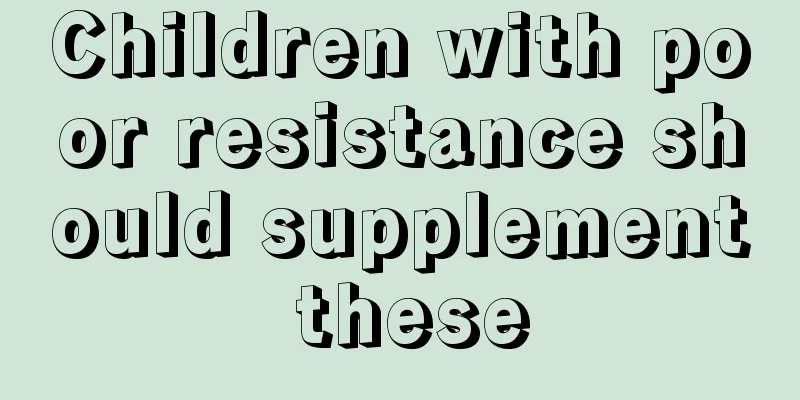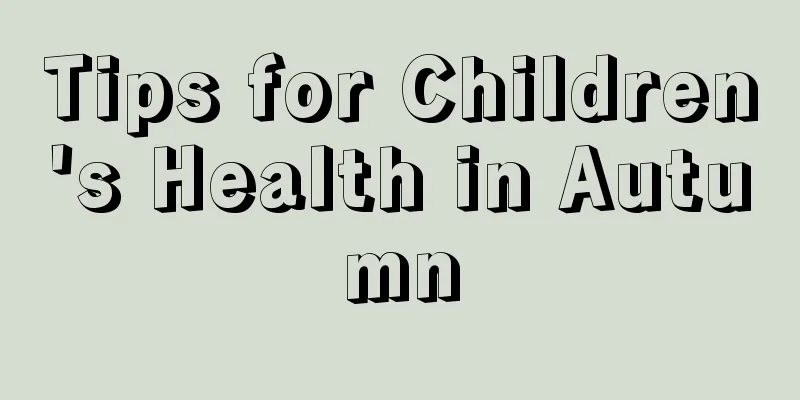What should I do if my baby has inflammation and repeated fever?

|
If there is a baby at home, the baby's every move will concern the whole family. Whether it is the elderly or the parents, they will focus all their attention on the child every day, for fear that something might happen to the child. During the baby's growth and development, it is inevitable that he will suffer from some diseases, such as inflammation of the body and so on. So, what should parents do when their baby has inflammation and repeated fever? What to do if your child has a recurring fever Fever is a relatively common disease. The treatment of fever can be divided into physical cooling and drug treatment. 1. Below 38℃ - Physical cooling If the child's body temperature does not exceed 38 degrees Celsius, there is no need to use medication, but physical therapy can be used. Common physical therapies include drinking more boiled water, taking warm baths, and applying cooling patches, which can effectively lower body temperature. 2.38℃~39℃-drug treatment At this time, parents need to pay attention to the baby's physical signs at all times so that timely treatment can be provided. For children, if the body temperature is higher than 38°C, medication is required. Western medicines include Tylenol, Motrin, etc., and Chinese medicines include antelope horn, Bupleurum, etc. When it comes to drug treatment, you must not be blind. It is recommended to feed the baby after consulting a doctor. 3. Over 39℃ - Doctor's advice on medication When the child's body temperature is higher than 39 degrees Celsius, it is in the high fever stage and requires Western medicine treatment. Ibuprofen and paracetamol antipyretics can be used appropriately. Parents must note that babies must take medication under the professional advice of a doctor, and must pay special attention to the dosage. In addition, the baby must be sent to the hospital for treatment in a timely manner. How to care for children with recurring fever 1. Warm water bath Remove clothes and wipe the whole body with a warm towel, focusing on the forehead, neck, armpits, limbs and groin. Try to use water of moderate temperature for bathing, so that the skin on the inside of the parent's wrist does not become hot. The total scrubbing time should be about 13 minutes, and keep wiping until the baby's body temperature drops to 38 degrees Celsius. This stretches the blood vessels in the skin, releasing heat, and also absorbs body heat when water vapor evaporates from the body surface. 2. Maintain room temperature The indoor temperature can be maintained at approximately 25-27 degrees Celsius. If there is air conditioning in the room, the child can be placed in the air-conditioned room appropriately. If there is no air conditioning, an electric fan can be used to blow around the child to gradually lower the child's body temperature. 3. Reduce clothing If the child's limbs are warm and the body is sweating, the heat needs to be released. You can take off the child's excess clothes or let the child wear less clothes. 4. Antipyretics According to professionals, antipyretics can only be used when the child's temperature exceeds 39 degrees Celsius. However, children under three years old should first use physical cooling methods during high fever, and try not to take or inject antipyretics to avoid collapse and drug toxicity. 5. Use external objects Using an ice pillow or fever-reducing patch can help the body release heat. However, for younger children, it is best not to use the former, because it is difficult for the baby to turn the body, and this method may cause the baby's body temperature to be low or cause part of the body to be cold. The latter contains a colloidal substance, the vaporization of which can take away a certain amount of heat, which can effectively avoid overcooling. |
<<: The baby's belly button fell off and there was some bleeding
>>: What is the fastest way to drown the neck?
Recommend
Can children eat scallops?
When it comes to food like scallops, many people ...
Causes of yellow runny nose in children
Some children will have a runny nose when they ar...
Do children need zinc supplements? A must-see for moms
Do children need zinc supplements? This is a very...
Newborn baby not feeding overnight
Newborns feel hungry very easily, so they need to...
What are the dangers of scrotal effusion in children?
When children are young, there will always be som...
The child suddenly has leg pain and cannot walk
Many parents have reported that their children ha...
How to treat osteomyelitis in children
Osteomyelitis in children needs to attract the sp...
What are the symptoms of a child's crooked neck?
In real life, some children are prone to crooked ...
What are the benefits of outdoor activities in kindergarten?
When the baby reaches a certain stage of growth, ...
What to do if your child has recurrent thrush
Many breastfeeding infants are prone to thrush, a...
Are there any side effects of azithromycin in children?
Azithromycin for children is a nationally approve...
What are the special treatments for baby cough?
Coughing is very common for babies. Generally, ba...
Three-year-old child peeling fingers
For some babies, parents are very concerned about...
Does Chinese medicine work for children's cough patches?
The country has now clearly stipulated that it is...
What to do if your child is allergic to mango
Parents and friends, we are more concerned about ...









